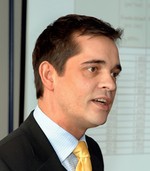If we are to achieve 100% renewables by 2050, as I argued in my previous blog post that we can and we should, there are two major issues that we have to recognise and start acting. Firstly, no more fossil fuel burning plants should be built after 2020 given the long life of such power stations. Secondly, we must use the next ten years to completely overhaul the way electricity is produced, transmitted and consumed in Europe.
 The fact is that Europe’s current electricity supply structure bears the characteristics of the time in which it was developed, a time when fossil fuels and then nuclear were everything. It is constructed within national boundaries, the markets supporting it are underdeveloped and it is now ageing. Given the international nature of the energy challenges that the EU is facing, it is disappointing that we still do not have an internal market for electricity. We need urgently to establish the free movement of energy in Europe.
The fact is that Europe’s current electricity supply structure bears the characteristics of the time in which it was developed, a time when fossil fuels and then nuclear were everything. It is constructed within national boundaries, the markets supporting it are underdeveloped and it is now ageing. Given the international nature of the energy challenges that the EU is facing, it is disappointing that we still do not have an internal market for electricity. We need urgently to establish the free movement of energy in Europe.
“We must use the next ten years to completely overhaul the way electricity is produced, transmitted and consumed in Europe.”
Climate change, depleting indigenous energy resources, increasing fuel costs and the threat of supply disruptions are washing up on our shores. Over the next 12 years, 360 GW of new electricity capacity – 50% of current EU capacity – needs to be built to replace ageing power plants and meet the expected increase in demand.
Europe must use this opportunity to construct a new, modern power system capable of meeting the energy and climate challenges of the 21st century, while enhancing Europe’s competitiveness. The power system must be supported by modern infrastructure technology, research and development and well functioning markets for electricity and transmission in which investors, rather than consumers, are exposed to carbon and fuel price risk.
Next year is critical for the EU to prove it is up to the challenge. In 2011, the European Commission will set out its proposals for the 2014-2020 budget which must reflect these new priorities. The budget must include investment in upgraded, extended and interconnected grids, and more R&D in wind technology. During the same year, ENTSO-E, the European Network of Transmission System Operators for Electricity, will set out what will be built in terms of grids until 2022. We are looking forward to the proof that the EU is truly committed to tackling climate change by bringing large amounts of renewable energy online.







 Comments
Comments